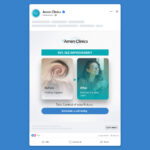Contents:
- Understanding Internet Marketing
- The Power of Personalization in Marketing
- Engaging with Customers through Live Chat
- The Role of Email in Internet Marketing
- Harnessing Social Media for Brand Exposure
- The Importance of Wishlists in E-commerce
- Tackling Cart Abandonment Issues
- Leveraging User-Generated Content
- Local Marketing: A Hidden Gem
- Optimizing Product Pages for Better Conversions
Understanding Internet Marketing
“Ten years ago, I was baffled by the term ‘Internet Marketing’. Fast forward to today, and it’s the lifeblood of countless businesses.”
Have you ever found yourself wondering, “What exactly is Internet Marketing?” Well, you’re not alone. In the vast realm of the digital world, Internet Marketing stands as a beacon, guiding businesses to success. But what does it truly entail?
Why It’s More Than Just “Online Advertising”
At its core, Internet Marketing is about connecting with your audience in the right place and at the right time. But it’s more than just putting up flashy ads on websites. It’s about meeting your audience where they spend most of their time: online. From the website you create to the online branding assets you develop – digital advertising, email marketing, online brochures, and beyond – there’s a vast spectrum of tactics and assets that fall under the umbrella of Internet Marketing.
The Digital Touchpoints
Think of the last product you purchased online. The journey probably involved several digital touchpoints, like a tweet about a trending product, a blog post, an email newsletter, or a Google search. These touchpoints are deliberate strategies crafted by savvy Internet marketers to lure you into making that purchase.
Engaging, Not Intruding
One of the most significant shifts in marketing today is the move from intrusive, broadcast advertising to engaging content marketing. Instead of casting a wide net and hoping for the best, Internet Marketing is about creating valuable content tailored to your audience. It’s about speaking to them in a language they understand, addressing their pain points, and offering solutions.
The Power of Data
Remember the last time you searched for a product online and then saw ads for it everywhere? That’s the power of data-driven Internet Marketing. By understanding user behavior, marketers can create personalized, targeted campaigns that resonate deeply with their audience.
The Power of Personalization in Marketing
“Over the last 10 years, I’ve seen a transformation. From generic, one-size-fits-all campaigns to tailored, personalized experiences that resonate deeply with consumers.”
Ever received an email that addressed you by your first name, or perhaps a recommendation that seemed almost eerily perfect for your tastes? That’s the magic of personalization in marketing. But why is it so powerful, and how can businesses harness its potential?
Why Generic No Longer Cuts It
- In today’s digital age, consumers are bombarded with countless marketing messages every day. To stand out, it’s no longer enough to just be loud or flashy. You need to be relevant. Personalization ensures that your message resonates with the individual, making them feel seen and understood.
The Shift from Mass to Me
- Remember the days of mass marketing? Large campaigns targeting broad audiences? Those days are fading. Now, it’s all about the individual. It’s about creating a one-on-one conversation, understanding their needs, preferences, and behaviors, and tailoring your message accordingly.
Data: The Heartbeat of Personalization
- How do businesses achieve this level of personalization? The answer lies in data. By collecting and analyzing data on user behavior, preferences, and interactions, businesses can gain deep insights into their audience. This allows for hyper-targeted campaigns that speak directly to the individual’s needs and desires.
Beyond Just Names: Deep Personalization
- It’s not just about addressing the user by their first name in an email. That’s just scratching the surface. Deep personalization involves understanding the user’s journey, their pain points, and their goals. It’s about delivering content, offers, and experiences that are tailor-made for them.
The Results Speak for Themselves
- Businesses that have embraced personalization have seen remarkable results. Higher engagement rates, increased conversions, and enhanced customer loyalty. Why? Because when a user feels understood and valued, they’re more likely to engage with a brand and become a loyal customer.
Engaging with Customers through Live Chat
“Spent last weekend at a tech conference, and one thing was clear: the businesses winning the customer service game all had one thing in common – Live Chat.”
Have you ever been on a website, had a burning question, but didn’t want to go through the hassle of sending an email or making a phone call? Enter Live Chat, the game-changer in real-time customer engagement. But what makes it so special?
The Instant Gratification Era
We live in a world of instant gratification. Whether it’s streaming a movie on demand or getting same-day delivery, people want things now. Live Chat taps into this desire by providing immediate answers to customer queries, making them feel valued and heard.
Building Trust in Real-Time
Imagine being in a physical store, pondering a purchase, and having a helpful assistant right there to answer your questions. That’s what Live Chat does for online businesses. It’s a virtual assistant, ready to help, advise, and guide. This real-time interaction builds trust and can often be the difference between a sale and an abandoned cart.
More Than Just Text
Modern Live Chat tools aren’t just about text. They incorporate video, screen sharing, and even co-browsing. This allows businesses to deeply engage with customers, understand their pain points, and offer tailored solutions on the spot.
A Goldmine of Insights
Beyond immediate customer service, Live Chat is a treasure trove of insights. By analyzing chat transcripts, businesses can identify common issues, questions, or concerns. This data is invaluable for refining products, services, and overall user experience.
Reducing Bounce Rates
Ever landed on a website, got confused, and just left? You’re not alone. Live Chat acts as a safety net, catching potential bounce candidates and engaging them before they leave. By addressing their concerns in real time, businesses can significantly reduce bounce rates and increase conversions.
The Role of Email in Internet Marketing
“You’ve got one month to revamp your marketing strategy. Where do you start? For me, it’s always been email.”
In the ever-evolving landscape of digital marketing, there’s one tool that has stood the test of time: email. But why, in an age of social media and instant messaging, does email remain such a powerful tool in the marketer’s arsenal?
- The Personal Touch: Unlike a social media post that’s broadcasted to thousands, an email lands directly in a person’s inbox. It’s personal. It’s direct. And when crafted correctly, it feels like a one-on-one conversation between the brand and the consumer. This intimacy is hard to replicate on other platforms.
- Segmentation and Targeting: With email marketing platforms, businesses can segment their audience based on behavior, preferences, and past interactions. This means you can send hyper-targeted campaigns, ensuring that your message resonates with the specific segment you’re addressing.
- Beyond the “Promotion” Tab: While many fear their emails getting lost in the dreaded “Promotion” tab, a well-crafted email can transcend these barriers. By providing consistent value, engaging content, and not just sales pitches, your emails can become something your audience looks forward to.
- Measurable Results: One of the standout features of email marketing is its measurability. Open rates, click-through rates, conversion rates – these metrics provide a clear picture of what’s working and what’s not. This data-driven approach allows for continuous optimization, ensuring your campaigns get better with each send.
- Building a Loyal Community: Email isn’t just about selling. It’s about storytelling, educating, and engaging. By sharing valuable content, updates, and stories, businesses can build a loyal community of subscribers who are invested in the brand’s journey.
Harnessing Social Media for Brand Exposure
“Over the last 10 years, I’ve watched brands rise and fall. The difference? Their mastery (or lack thereof) of social media.”
In today’s digital age, where everyone’s eyes are glued to screens and scrolls, social media isn’t just a platform; it’s the stage. But how do brands harness their power to truly shine in the spotlight?
The New Town Square
Gone are the days when brands would shout their messages from billboards and TV screens. Today’s consumers gather in the virtual town squares of Facebook, Instagram, Twitter, and TikTok. Being present and active on these platforms is no longer optional; it’s essential.
Engagement Over Promotion
It’s easy to fall into the trap of treating social media as just another advertising channel. But here’s the catch: people don’t want ads; they want engagement. Brands that succeed are those that converse, interact, and build genuine relationships with their audience.
Telling a Story
Every tweet, post, or story is a chapter in your brand’s narrative. What story are you telling? Is it one of innovation? Sustainability? Community? Crafting and conveying a consistent brand story across platforms can create a lasting impact.
Influencers: The Modern-Day Brand Ambassadors
In the world of social media, influencers wield significant power. Collaborating with the right influencers can amplify your brand’s message, reaching audiences you might not have accessed otherwise. But remember, it’s not about follower count; it’s about authenticity and alignment with your brand values.
Analytics: The Behind-the-Scenes Hero
Behind every successful social media campaign is a robust analytics tool. Tracking likes, shares, comments, and conversions can provide invaluable insights. Which posts resonated? Which ones flopped? This data-driven approach ensures continuous learning and refinement.
The Importance of Wishlists in E-commerce
“I remember my first online shopping experience a decade ago. I was overwhelmed with choices. Then, I discovered the wishlist, and it changed everything.”
In the bustling aisles of the digital marketplace, wishlists have emerged as a quiet sanctuary for shoppers. But what makes them so crucial in the e-commerce landscape?
1. A Digital Bookmark
- Ever stumbled upon a product you adored but weren’t ready to purchase? That’s where wishlists come in. They act as a digital bookmark, allowing users to save products for later, ensuring they don’t get lost in the vast sea of online offerings.
2. Understanding Customer Desires
- For e-commerce businesses, wishlists are a goldmine of insights. They provide a window into the customer’s desires, preferences, and potential future purchases. By analyzing wishlist data, businesses can tailor their marketing efforts, ensuring they hit the mark.
3. Reducing Cart Abandonment
- A common challenge in e-commerce is cart abandonment. However, wishlists can act as a safety net. Even if a customer isn’t ready to make a purchase now, by adding a product to their wishlist, there’s a higher likelihood they’ll return to complete the purchase later.
4. Personalized Marketing Campaigns
- Imagine receiving an email notifying you of a discount on an item you’ve had on your wishlist for weeks. That’s powerful, personalized marketing. E-commerce platforms can use wishlist data to craft hyper-targeted promotional campaigns, increasing conversion rates.
5. Building Anticipation and Desire
- There’s something about the act of adding a product to a wishlist that builds anticipation and desire. It creates a sense of ownership, even before the purchase is made. Over time, this emotional connection can nudge the customer towards making a purchase.
Tackling Cart Abandonment Issues
“I recall a time when I almost splurged on a luxury item online. My cart was full, but something held me back. Days later, a nudge from the brand brought me back. That’s the art of tackling cart abandonment.”
The digital shopping cart, filled with potential purchases, often remains just that – potential. Cart abandonment is a challenge that every e-commerce business grapples with. But why does it happen, and how can it be addressed?
The Silent Sales Killer
Cart abandonment is like a shopper walking into a store, filling their basket, and then leaving it at the checkout counter. It’s a missed opportunity, a sale that was almost there but slipped away. In the digital realm, this phenomenon is even more pronounced, making it a silent sales killer.
Understanding the ‘Why’
Before diving into solutions, it’s crucial to understand the reasons behind cart abandonment. Is it high shipping costs? A complicated checkout process? Or perhaps a lack of trust in the payment gateway? By pinpointing the pain points, businesses can tailor their strategies effectively.
Retargeting: The Gentle Nudge
Ever browsed a product and then seen ads for it everywhere? That’s retargeting in action. By reminding customers of what they left behind, businesses can reignite the spark of interest, nudging them back to complete the purchase.
Offering Incentives
Sometimes, all it takes is a little incentive. A discount code, free shipping, or a limited-time offer can tip the scales in favor of a purchase. It’s about making the deal too good to resist.
Streamlining the Checkout Process
A complicated checkout process can deter even the most eager shopper. By simplifying and streamlining the process, reducing the number of steps, and offering multiple payment options, businesses can ensure a smoother journey from cart to purchase.
Building Trust
Trust is paramount in e-commerce. Offering secure payment gateways, showcasing customer reviews, and providing clear return policies can instill confidence in shoppers, reducing the likelihood of cart abandonment.
Leveraging User-Generated Content
“I was scrolling through my feed the other day when I stumbled upon a candid review of a product I’d been eyeing. It wasn’t from the brand, but from someone just like me. That genuine perspective sealed the deal.”
In the vast digital landscape, amidst polished ads and curated brand messages, there’s a type of content that stands out in its authenticity: User-Generated Content (UGC). But what makes UGC so compelling, and how can brands harness its raw power?
- The Authentic Voice of the Customer: In a world saturated with advertisements, consumers have become adept at tuning out overt brand messages. Enter UGC. It’s genuine, unfiltered, and resonates deeply because it comes from peers, not corporations. It’s the authentic voice of the customer.
- Building Trust and Credibility: There’s a reason why many turn to reviews before making a purchase. UGC, be it reviews, testimonials, or candid photos, offers a glimpse into the real-world use of a product or service. This authenticity builds trust and adds a layer of credibility that traditional advertising often lacks.
- Amplifying Engagement: Imagine the thrill of seeing your photo or review featured by a brand you love. By showcasing UGC, brands not only validate the individual user’s experience but also encourage more customers to share their own stories, creating a ripple effect of engagement.
- UGC as a Source of Inspiration: Beyond reviews and testimonials, UGC can be a treasure trove of inspiration. From unique product uses to creative hacks, the ways real users interact with a product can offer brands fresh perspectives and ideas for future campaigns or even product enhancements.
- Navigating the Challenges: While UGC is powerful, it’s not without challenges. Ensuring content rights, managing negative feedback, and maintaining brand image are all part and parcel of leveraging UGC. However, with a thoughtful approach, these challenges can be navigated successfully.
Local Marketing: A Hidden Gem
“On a recent trip to a quaint town, I stumbled upon a local café. No flashy ads, no big billboards. Just a simple sign and a buzz from the locals. That’s when I realized the understated power of local marketing.”
In the grand tapestry of marketing strategies, there’s a thread that often goes unnoticed but holds immense potential: Local Marketing. But what is it about this localized approach that makes it so impactful, and how can businesses tap into its magic?
The Charm of the Familiar
There’s comfort in the familiar. Local marketing taps into this sentiment, connecting businesses with their immediate community. It’s not about reaching the masses; it’s about reaching the right people – those in your vicinity, those who walk by your storefront, those who live a block away.
Building Genuine Relationships
Local marketing is personal. It’s about shaking hands, knowing names, and understanding local nuances. This genuine, face-to-face interaction fosters trust and loyalty, turning customers into advocates and brand ambassadors within the community.
Leveraging Local Events and Festivities
Every community has its unique events, festivals, and traditions. By actively participating in or even sponsoring these events, businesses can embed themselves in the local culture, creating lasting memories and associations for the community members.
Optimizing for Local Search
In the digital age, local marketing isn’t just about physical presence. It’s about ensuring that when someone in your vicinity searches for a product or service you offer, you’re the first name they see. Tools like Google My Business and local SEO strategies are pivotal in achieving this.
Collaborating with Local Influencers
Every community has its influencers – individuals who hold sway and are looked up to. Collaborating with these local influencers can amplify your brand’s message, reaching audiences in a more authentic and relatable manner.
Optimizing Product Pages for Better Conversions
“I recall a time when I was on the verge of buying a product online. The images were blurry, and the description was vague. I hesitated and eventually left. That’s when it hit me: the power of a well-optimized product page.”
In the bustling marketplace of e-commerce, where every click counts, the product page stands as the final frontier before conversion. But what elements make a product page truly compelling, and how can businesses optimize them for better conversions?
First Impressions Matter: High-Quality Images
- A picture is worth a thousand words, especially in e-commerce. High-resolution images, multiple angles, and zoom capabilities allow customers to get a virtual feel of the product, building confidence in their purchase decisions.
Crafting Compelling Descriptions
- Beyond the visuals, the product description plays a pivotal role. It’s not just about listing features; it’s about painting a picture, telling a story, and showcasing the product’s value. A well-crafted description addresses potential questions and highlights key benefits.
Social Proof: Reviews and Testimonials
- Ever been swayed by a rave review? You’re not alone. Incorporating customer reviews and testimonials adds a layer of trust and authenticity, assuring potential buyers of the product’s quality and value.
Clear Call-to-Action (CTA)
- A subtle yet crucial element is the CTA. Whether it’s “Add to Cart,” “Buy Now,” or “Reserve Yours,” a clear, prominent CTA button guides the user seamlessly through the conversion process.
Highlighting Availability and Shipping
- Nothing dampens the shopping spirit like finding out a product is out of stock or has exorbitant shipping fees. Displaying availability, shipping costs, and delivery timelines can prevent last-minute drop-offs and enhance the user experience.
Mobile Optimization
- With a significant chunk of online shopping happening on mobile devices, ensuring that product pages are mobile-optimized is non-negotiable. A responsive design, easy navigation, and quick loading times can make or break the mobile shopping experience.
Sources:
- 12 Proven Product-Page Ideas to Increase Your E-commerce Conversion Rate – Sellbrite. Retrieved from https://www.sellbrite.com/blog/product-page-conversions/
- How To Optimize Your Product Page For Better Conversions – BSS Commerce. Retrieved from https://bsscommerce.com/shopify/optimize-your-product-page-for-better-conversions/
- 7 Steps to a High-Converting Product Page: A Complete Guide. Retrieved from https://inbound.human.marketing/improve-ecommerce-product-page-to-convert
- Product Page Tune-Up: 9 Timeless Ways to Increase Conversions – Shopify Philippines. Retrieved from https://www.shopify.com/ph/blog/product-page-increase-conversions
- Optimizing Product Pages: Conversion Rate & SEO Tips – Yotpo. Retrieved from https://www.yotpo.com/ecommerce-product-page-guide/conversion-seo/






